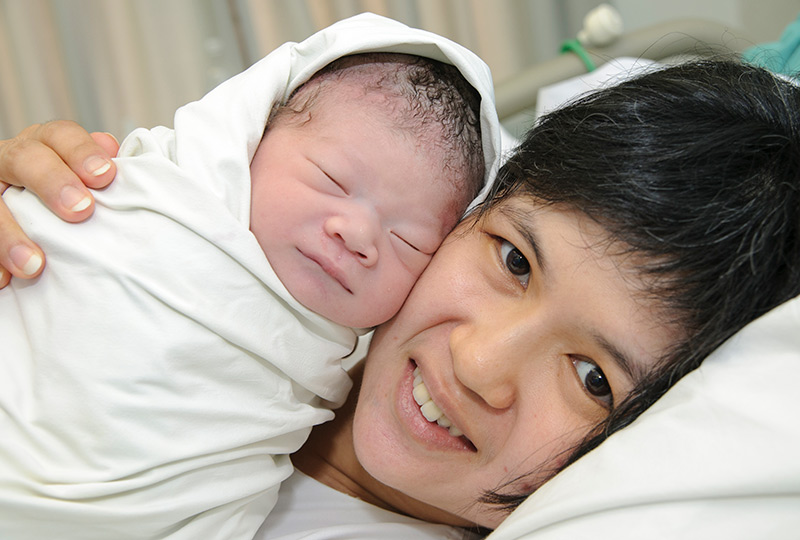For years women were discouraged from attempting vaginal birth after a C-section. Now the thinking is changing. Here’s what to ask your provider.
As a certified nurse-midwife, it never occurred to me during my first pregnancy that I would need a cesarean section. I believed in physiologic birth and trusted my body to birth vaginally.
However, after a long labor and pushing for several hours — and an attempt at a vacuum-assisted vaginal birth — I had a c-section. Although my baby boy was perfect and I was healthy, I was still disappointed in my body, my birth experience and my postpartum recovery.
Fast-forward two and a half years, and I was pregnant with baby number two. I met with my midwives throughout my pregnancy, hoping to go into spontaneous labor and have a vaginal birth after cesarean.
I was nervous about birth, doubting my body and my pelvis through my whole pregnancy. Some women are discouraged from attempting a “trial of labor after cesarean” for numerous reasons. While all women attempting this have a slightly higher risk of uterine rupture, if a woman has a vertical (or “classical”) uterine incision, she has more of an increased risk of uterine rupture during labor and birth. Or she could have a uterine or pelvic anomaly that would prevent a vaginal birth. But frequently, women are discouraged from attempting a trial of labor after cesarean due to misconceptions about the safety of a vaginal birth after C-secion or for the convenience associated with scheduling a repeat surgery. My team of midwives were calmly reassuring throughout my second pregnancy about my ability to labor and have a vaginal birth.
My water broke at 38 weeks, at bedtime, but I didn’t go into labor. Disappointed, I called the on-call midwife later that night to report this news. She brought me in to the hospital and confirmed that my water had broken, then started me on low-dose Pitocin (a synthetic version of the hormone oxytocin) to encourage my uterus to contract. Three hours later, my daughter was born vaginally! My partner and I were thrilled with the birth and amazed at the shortened recovery time.
Five years later, I had another successful vaginal birth with my second son. We were so happy to have been able to have all of our children, and particularly happy with being able to vaginal births with the second two.
Luckily, the counseling surrounding vaginal births after cesarean section is changing, and it is becoming more common.
In 2010, the American College of Obstetricians and Gynecologists issued a statement supporting vaginal birth after cesarean section “as a safe and suitable choice for women who have had a prior cesarean delivery and are appropriate candidates, including for some who have had two previous cesareans.” This depends on each woman’s circumstances, ACOG added, “and the decision to attempt trial of labor should be made through shared decision-making between the patient and the OB-GYN.” In 2017, American College of Obstetricians and Gynecologists updated its guidelines to say that vaginal birth after cesarean section “should be attempted at maternal care facilities that typically manage uncomplicated births if they are capable of performing emergency deliveries.”
In 2017, 88 percent of the women delivering with the Vanderbilt University School of Nursing Faculty Nurse-Midwife Practice who attempted vaginal births after cesareans did deliver vaginally.
Women with the best chances for VBAC meet these criteria:
- Adequate time between pregnancies (18 months or more is recommended for healing of the uterine scar);
- A normal body-mass index (BMI);
- Uncomplicated pregnancies;
- Low-transverse uterine incision from their c-section..
These are smart questions to ask your midwife or OB-GYN if you want a vaginal birth after cesarean:
- Am I a good candidate for a trial of labor after cesarean?
- What policy does the delivering hospital have regarding vaginal birth after cesarean? If there is no policy, the hospital is probably not VBAC-friendly. These policies are meant to ensure the safety of mother and baby, so this is a very important question.
- Do you as my provider support trial of labor after cesarean?
- What are your success rates with women and vaginal birth after cesarean?
- How will you help me achieve this goal?
This post was written by Melissa Davis, DNP, CNM, FNP, a Vanderbilt certified nurse-midwife. She has three children.

Vanderbilt Women’s Health provides care for women at all stages of their lives at locations across Middle Tennessee. Learn more here or call 615-343-5700.

